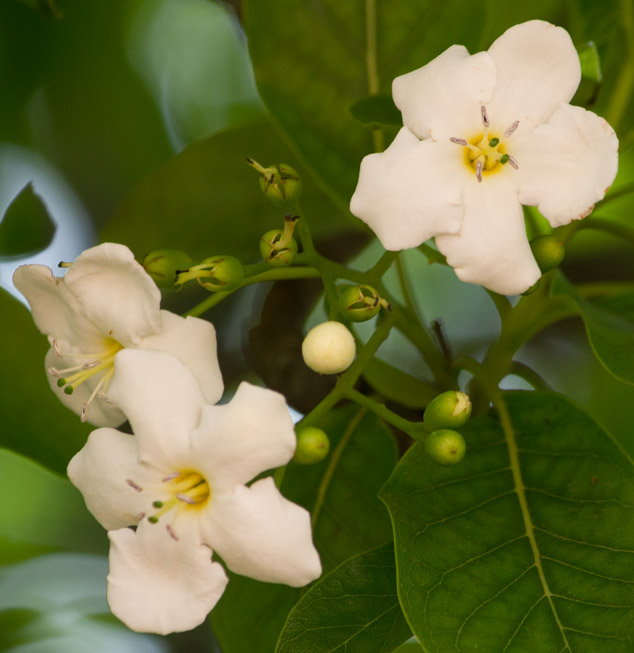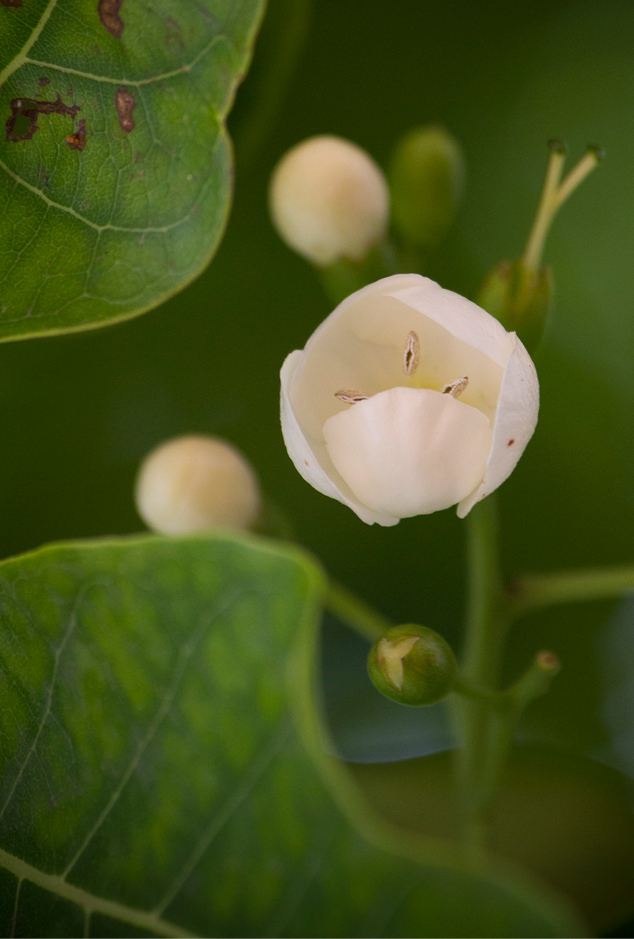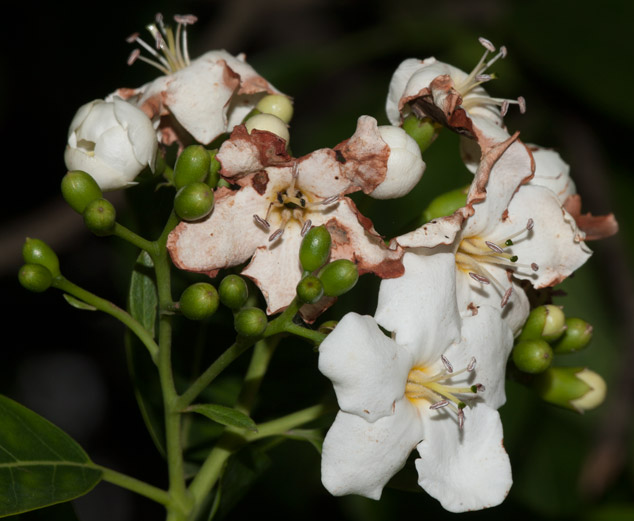Flavoring for cacao drink
I am working on a long range project to identify and then find all plants used by the Aztec or Maya to flavor their cacao. I have found about 33% of the plants. Some, like achiote, are easy to locate since they are widely used to flavor cacao still today.
Bourreria huanita is one of the flavorings for cacao among the Aztec. Since this tree is found in the Highlands of Guatemala, we estimate that the Maya may also have used this flower as a spice.
Bourreria huanita Jazmin del istmo San Juan Obispo photo by Sofia Monzon.
In English it is called popcorn flower
Popped-maize flower; used to perfume cacao (S. Coe 1994). Perhaps the Aztec had a different kind of popped maize, but to me the flower of this tree never reminds me of popped anything. Perhaps I have to see the dried flower in the market? I have seen only the bright fresh white flower on the tree.
esquisúchil, Bourreria huanita (Llave & Lex.), popcorn flower Izquixochitl in Nahuatl of Central Mexico, family: Boraginaceae.
Ik'al te' black tree, Tzotzil Mayan language (Breedlove and Laughlin 1993:143)
Muk'ta ch'it (Breedlove and Laughlin 1993: 156).
Bourreria huanita is also medicinal
Most of the plants used to flavor cacao had other uses: three of the flavorings were used as soap!. Most of the flowers and bark used to flavor cacao was also medicinal.
The bark of Bourreria huanita is used as an antiperiodic and astringent in the state of Michoacan, Mexico. www.henriettesherbal.com/eclectic/journals/ajp1885/12-mex-mat-med.html
Bourreria huanita Jazmin del istmo photo by Sofia Monzon.
Although best known for Antigua Guatemala, the tree is also Mexican
Fray Diego de Duran lists izquixochitl as a tree so important to the Aztecs that the emperor had them brought to the Highlands for the imperial garden.
Where to find esquisúchil, Bourreria huanita?
Although Bourreria huanita is best known for Antigua Guatemala, it is also found elsewhere throughout Guatemala.
- Alta Verapaz
- El Quiche
- Izabal
- Jutiapa
- Quetzaltenango
- Sacatepequez
- Guatemala
Differents stages of Bourreria huanita or Jazmin del istmo San Juan Obispo. Photo by Sofía Monzón.
This list is from Trees of Guatemala (Parker 2008:107), which in turn is copied from standard monographs on the botany of Guatemala, by Standley and his team.
In Antigua you can see esquisúchil, Bourreria huanita in the garden of the El Calvario church. But there are other trees in other parks of Antigua as well, plus in nearby towns (almost always near a church).
In Copan pollen of Bourreria huanita was found associated with the Classic period Maya. It will be helpful to learn whether Bourreria huanita was common at the altitude of Copan, which is much lower than the altitude of Antigua Guatemala. But it is well documented that the Aztec emperor had trees brought to his capital which were from other eco-systems. And cacao blooms and fruits in the village museum of Copan (as it does in the FLAAR ethnobotany garden at 1500 meters above sea level).
To learn more about Bourreria huanita, click here
Updated August, 2019
First posted March 11, 2013.
















































































